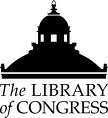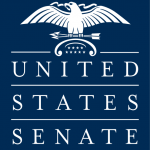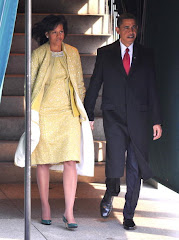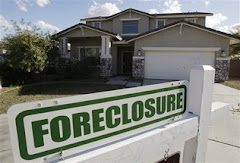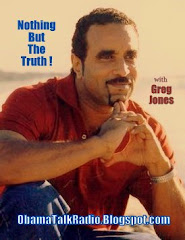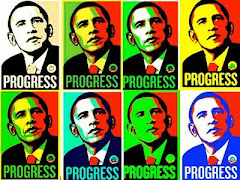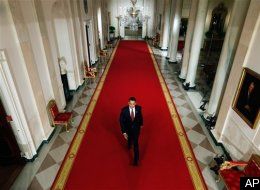
THE WHITE HOUSE
Office of the Press Secretary
_________________________________________________________________
April 14, 2009
Remarks of President Barack Obama
A New Foundation !
Tuesday, April 14th, 2009
Washington, DC
As Prepared for Delivery
It has now been twelve weeks since my administration began. And I think even our critics would agree that at the very least, we’ve been busy. In just under three months, we have responded to an extraordinary set of economic challenges with extraordinary action – action that has been unprecedented in both its scale and its speed.
I know that some have accused us of taking on too much at once. Others believe we haven’t done enough. And many Americans are simply wondering how all of our different programs and policies fit together in a single, overarching strategy that will move this economy from recession to recovery and ultimately to prosperity.
So today, I want to step back for a moment and explain our strategy as clearly as I can. I want to talk about what we’ve done, why we’ve done it, and what we have left to do. I want to update you on the progress we’ve made, and be honest about the pitfalls that may lie ahead.
And most of all, I want every American to know that each action we take and each policy we pursue is driven by a larger vision of America’s future – a future where sustained economic growth creates good jobs and rising incomes; a future where prosperity is fueled not by excessive debt, reckless speculation, and fleeing profit, but is instead built by skilled, productive workers; by sound investments that will spread opportunity at home and allow this nation to lead the world in the technologies, innovations, and discoveries that will shape the 21st century. That is the America I see. That is the future I know we can have.
To understand how we get there, we first need to understand how we got here.
Recessions are not uncommon. Markets and economies naturally ebb and flow, as we have seen many times in our history. But this recession is different. This recession was not caused by a normal downturn in the business cycle. It was caused by a perfect storm of irresponsibility and poor decision-making that stretched from Wall Street to Washington to Main Street .
As has been widely reported, it started in the housing market. During the course of the decade, the formula for buying a house changed: instead of saving their pennies to buy their dream house, many Americans found they could take out loans that by traditional standards their incomes just could not support. Others were tricked into signing these subprime loans by lenders who were trying to make a quick profit. And the reason these loans were so readily available was that Wall Street saw big profits to be made. Investment banks would buy and package together these questionable mortgages into securities, arguing that by pooling the mortgages, the risks had been reduced. And credit agencies that are supposed to help investors determine the soundness of various investments stamped the securities with their safest rating when they should have been labeled “Buyer Beware.”
No one really knew what the actual value of these securities were, but since the housing market was booming and prices were rising, banks and investors kept buying and selling them, always passing off the risk to someone else for a greater profit without having to take any of the responsibility. Banks took on more debt than they could handle. The government-chartered companies Fannie Mae and Freddie Mac, whose traditional mandate was to help support traditional mortgages, decided to get in on the action by buying and holding billions of dollars of these securities. AIG, the biggest insurer in the world, decided to make profits by selling billions of dollars of complicated financial instruments that supposedly insured these securities. Everybody was making record profits – except the wealth created was real only on paper. And as the bubble grew, there was almost no accountability or oversight from anyone in Washington .
Then the housing bubble burst. Home prices fell. People began defaulting on their subprime mortgages. The value of all those loans and securities plummeted. Banks and investors couldn’t find anyone to buy them. Greed gave way to fear. Investors pulled their money out of the market. Large financial institutions that didn’t have enough money on hand to pay off all their obligations collapsed. Other banks held on tight to the money they did have and simply stopped lending.
This is when the crisis spread from Wall Street to Main Street . After all, the ability to get a loan is how you finance the purchase of everything from a home to a car to a college education. It’s how stores stock their shelves, farms buy equipment, and businesses make payroll. So when banks stopped lending money, businesses started laying off workers. When laid off workers had less money to spend, businesses were forced to lay off even more workers. When people couldn’t get car loans, a bad situation at the auto companies became even worse. When people couldn’t get home loans, the crisis in the housing market only deepened. Because the infected securities were being traded worldwide and other nations also had weak regulations, this recession soon became global. And when other nations can’t afford to buy our goods, it slows our economy even further.
This is the situation we confronted on the day we took office. And so our most urgent task has been to clear away the wreckage, repair the immediate damage to the economy, and do everything we can to prevent a larger collapse. And since the problems we face are all working off each other to feed a vicious economic downturn, we’ve had no choice but to attack all fronts of our economic crisis at once.
The first step was to fight a severe shortage of demand in the economy. The Federal Reserve did this by dramatically lowering interest rates last year in order to boost investment. And my administration and Congress boosted demand by passing the largest recovery plan in our nation’s history. It’s a plan that is already in the process of saving or creating 3.5 million jobs over the next two years. It is putting money directly in people’s pockets with a tax cut for 95% of working families that is now showing up in paychecks across America . And to cushion the blow of this recession, we also provided extended unemployment benefits and continued health care coverage to Americans who have lost their jobs through no fault of their own.
Now, some have argued that this recovery plan is a case of irresponsible government spending; that it is somehow to blame for our long-term deficit projections, and that the federal government should be cutting instead of increasing spending right now. So let me tackle this argument head on.
To begin with, economists on both the left and right agree that the last thing a government should do in the middle of a recession is to cut back on spending. You see, when this recession began, many families sat around their kitchen table and tried to figure out where they could cut back. So do many businesses. That is a completely responsible and understandable reaction. But if every family in America cuts back, then no one is spending any money, which means there are more layoffs, and the economy gets even worse. That’s why the government has to step in and temporarily boost spending in order to stimulate demand. And that’s exactly what we’re doing right now.
Second of all, I absolutely agree that our long-term deficit is a major problem that we have to fix. But the fact is that this recovery plan represents only a tiny fraction of that long-term deficit. As I will discuss in a moment, the key to dealing with our deficit and debt is to get a handle on out-of-control health care costs – not to stand idly by as the economy goes into free fall.
So the recovery plan has been the first step in confronting this economic crisis. The second step has been to heal our financial system so that credit is once again flowing to the businesses and families who rely on it.
The heart of this financial crisis is that too many banks and other financial institutions simply stopped lending money. In a climate of fear, banks were unable to replace their losses by raising new capital on their own, and they were unwilling to lend the money they did have because they were afraid that no one would pay it back. It is for this reason that the last administration used the Troubled Asset Relief Program, or TARP, to provide these banks with temporary financial assistance in order to get them lending again.
Now, I don’t agree with some of the ways the TARP program was managed, but I do agree with the broader rationale that we must provide banks with the capital and the confidence necessary to start lending again. That is the purpose of the stress tests that will soon tell us how much additional capital will be needed to support lending at our largest banks. Ideally, these needs will be met by private investors. But where this is not possible, and banks require substantial additional resources from the government, we will hold accountable those responsible, force the necessary adjustments, provide the support to clean up their balance sheets, and assure the continuity of a strong, viable institution that can serve our people and our economy.
Of course, there are some who argue that the government should stand back and simply let these banks fail – especially since in many cases it was their bad decisions that helped create the crisis in the first place. But whether we like it or not, history has repeatedly shown that when nations do not take early and aggressive action to get credit flowing again, they have crises that last years and years instead of months and months – years of low growth, low job creation, and low investment that cost those nations far more than a course of bold, upfront action. And although there are a lot of Americans who understandably think that government money would be better spent going directly to families and businesses instead of banks – “where’s our bailout?,” they ask – the truth is that a dollar of capital in a bank can actually result in eight or ten dollars of loans to families and businesses, a multiplier effect that can ultimately lead to a faster pace of economic growth.
On the other hand, there have been some who don’t dispute that we need to shore up the banking system, but suggest that we have been too timid in how we go about it. They say that the federal government should have already preemptively stepped in and taken over major financial institutions the way that the FDIC currently intervenes in smaller banks, and that our failure to do so is yet another example of Washington coddling Wall Street. So let me be clear – the reason we have not taken this step has nothing to do with any ideological or political judgment we’ve made about government involvement in banks, and it’s certainly not because of any concern we have for the management and shareholders whose actions have helped cause this mess.
Rather, it is because we believe that preemptive government takeovers are likely to end up costing taxpayers even more in the end, and because it is more likely to undermine than to create confidence. Governments should practice the same principle as doctors: first do no harm. So rest assured – we will do whatever is necessary to get credit flowing again, but we will do so in ways that minimize risks to taxpayers and to the broader economy. To that end, in addition to the program to provide capital to the banks, we have launched a plan that will pair government resources with private investment in order to clear away the old loans and securities – the so-called toxic assets – that are also preventing our banks from lending money.
Now, what we’ve also learned during this crisis is that our banks aren’t the only institutions affected by these toxic assets that are clogging the financial system. A.I.G., for example, is not a bank. And yet because it chose to insure trillions of dollars worth of risky assets, its failure could threaten the entire financial system and freeze lending even further. This is why, as frustrating as it is – and I promise you, nobody is more frustrated than me – we’ve had to provide support for A.I.G. It’s also why we need new legal authority so that we have the power to intervene in such financial institutions, just like a bankruptcy court does with businesses that hit hard times, so that we can restructure these businesses in an orderly way that does not induce panic – and can restructure inappropriate bonus contracts without creating a perception that government can just change compensation rules on a whim.
This is also why we’re moving aggressively to unfreeze markets and jumpstart lending outside the banking system, where more than half of all lending in America actually takes place. To do this, we’ve started a program that will increase guarantees for small business loans and unlock the market for auto loans and student loans. And to stabilize the housing market, we’ve launched a plan that will save up to four million responsible homeowners from foreclosure and help many millions more re-finance.
In a few weeks, we will also reassess the state of Chrysler and General Motors, two companies with an important place in our history and a large footprint in our economy – but two companies that have also fallen on hard times.
Late last year, the companies were given transitional loans by the previous administration to tide them over as they worked to develop viable business plans. But the plans they developed fell short, and so we have given them some additional time to work these complex issues through. We owed that, not to the executives whose bad bets contributed to the weakening of their companies, but to the hundreds of thousands of workers whose livelihoods hang in the balance.
It is our fervent hope that in the coming weeks, Chrysler will find a viable business partner and that GM will develop a business plan that will put it on a path to profitability without endless support from the American taxpayer. In the meantime, we are taking steps to spur demand for American cars and provide relief to autoworkers and their communities. And we will continue to reaffirm this nation’s commitment to a 21st century American auto industry that creates new jobs and builds the fuel-efficient cars and trucks that will carry us toward a clean energy future.
Finally, to coordinate a global response to this global recession, I went to the meeting of the G20 nations in London the other week. Each nation has undertaken significant stimulus to spur demand. All agreed to pursue tougher regulatory reforms. We also agreed to triple the lending capacity of the International Monetary Fund, an international financial institution supported by all the major economies, and provide direct assistance to developing nations and vulnerable populations – because America’s success depends on whether other nations have the ability to buy what we sell. We pledged to avoid the trade barriers and protectionism that hurts us all in the end. And we decided to meet again in the fall to gauge our progress and take additional steps if necessary.
So all of these actions – the Recovery Act, the bank capitalization program, the housing plan, the strengthening of the non-bank credit market, the auto plan, and our work at the G20 – have been necessary pieces of the recovery puzzle. They have been designed to increase aggregate demand, get credit flowing again to families and businesses, and help them ride out the storm. And taken together, these actions are starting to generate signs of economic progress. Because of our recovery plan, schools and police departments have cancelled planned layoffs. Clean energy companies and construction companies are re-hiring workers to build everything from energy efficient windows to new roads and highways. Our housing plan has helped lead to a spike in the number of homeowners who are taking advantage of historically-low mortgage rates by refinancing, which is like putting a $2,000 tax cut in your in pocket. Our program to support the market for auto loans and student loans has started to unfreeze this market and securitize more of this lending in the last few weeks. And small businesses are seeing a jump in loan activity for the first time in months.
This is all welcome and encouraging news, but it does not mean that hard times are over. 2009 will continue to be a difficult year for America ’s economy. The severity of this recession will cause more job loss, more foreclosures, and more pain before it ends. The market will continue to rise and fall. Credit is still not flowing nearly as easily as it should. The process for restructuring AIG and the auto companies will involve difficult and sometimes unpopular choices. All of this means that there is much more work to be done. And all of this means that you can continue to expect an unrelenting, unyielding, day-by-day effort from this administration to fight for economic recovery on all fronts.
But even as we continue to clear away the wreckage and address the immediate crisis, it is my firm belief that our next task is to make sure such a crisis never happens again. Even as we clean up balance sheets and get credit flowing; even as people start spending and business start hiring – we have to realize that we cannot go back to the bubble and bust economy that led us to this point.
It is simply not sustainable to have a 21st century financial system that is governed by 20th century rules and regulations that allowed the recklessness of a few to threaten the entire economy. It is not sustainable to have an economy where in one year, 40% of our corporate profits came from a financial sector that was based too much on inflated home prices, maxed out credit cards, overleveraged banks and overvalued assets; or an economy where the incomes of the top 1% have skyrocketed while the typical working household has seen their income decline by nearly $2,000.
For even as too many were chasing ever-bigger bonuses and short-term profits over the last decade, we continued to neglect the long-term threats to our prosperity: the crushing burden that the rising cost of health care is placing on families and businesses; the failure of our education system to prepare our workers for a new age; the progress that other nations are making on clean energy industries and technologies while we remain addicted to foreign oil; the growing debt that we’re passing on to our children. And even after we emerge from the current recession, these challenges will still represent major obstacles that stand in the way of our success in the 21st century.
There is a parable at the end of the Sermon on the Mount that tells the story of two men. The first built his house on a pile of sand, and it was destroyed as soon as the storm hit. But the second is known as the wise man, for when “…the rain descended, and the floods came, and the winds blew, and beat upon that house…it fell not: for it was founded upon a rock.”
We cannot rebuild this economy on the same pile of sand. We must build our house upon a rock. We must lay a new foundation for growth and prosperity – a foundation that will move us from an era of borrow and spend to one where we save and invest; where we consume less at home and send more exports abroad.
It’s a foundation built upon five pillars that will grow our economy and make this new century another American century: new rules for Wall Street that will reward drive and innovation; new investments in education that will make our workforce more skilled and competitive; new investments in renewable energy and technology that will create new jobs and industries; new investments in health care that will cut costs for families and businesses; and new savings in our federal budget that will bring down the debt for future generations. That is the new foundation we must build. That must be our future – and my Administration’s policies are designed to achieve that future.
The first step we will take to build this foundation is to reform the outdated rules and regulations that allowed this crisis to happen in the first place. It is time to lay down tough new rules of the road for Wall Street to ensure that we never find ourselves here again. Rules that punish short-cuts and abuse. Rules that tie someone’s pay to their actual job performance. Rules that protect typical American families when they buy a home, get a credit card or invest in a 401k. We have already begun to work with Congress to shape this new regulatory framework – and I expect a bill to arrive on my desk for signature before the year is out.
The second pillar of this new foundation is an education system that finally prepares our workers for a 21st century economy. In the 20th century, the GI Bill sent a generation to college, and for decades, we led the world in education and economic growth. But in this new economy, we trail the world’s leaders in graduation rates and achievement. That is why we have set a goal that will greatly enhance our ability to compete for the high-wage, high-tech jobs of the 21st century: by 2020, America will once more have the highest proportion of college graduates in the world.
To meet that goal, we have already dramatically expanded early childhood education. We are investing in innovative programs that have proven to help schools meet high standards and close achievement gaps. We are creating new rewards tied to teacher performance and new pathways for advancement. I have asked every American to commit to at least one year or more of higher education or career training, and we have provided tax credits to make a college education more affordable for every American.
The third pillar of this new foundation is to harness the renewable energy that can create millions of new jobs and new industries. We all know that the country that harnesses this energy will lead the 21st century. Yet we have allowed other countries to outpace us on this race to the future.
Well, I do not accept a future where the jobs and industries of tomorrow take root beyond our borders. It is time for America to lead again.
The investments we made in the Recovery Act will double this nation’s supply of renewable energy in the next three years. And we are putting Americans to work making our homes and buildings more efficient so that we can save billions on our energy bills and grow our economy at the same time.
But the only way to truly spark this transformation is through a gradual, market-based cap on carbon pollution, so that clean energy is the profitable kind of energy. Some have argued that we shouldn’t attempt such a transition until the economy recovers, and they are right that we have to take the costs of transition into account. But we can no longer delay putting a framework for a clean energy economy in place. If businesses and entrepreneurs know today that we are closing this carbon pollution loophole, they will start investing in clean energy now. And pretty soon, we’ll see more companies constructing solar panels, and workers building wind turbines, and car companies manufacturing fuel-efficient cars. Investors will put some money into a new energy technology, and a small business will open to start selling it. That’s how we can grow this economy, enhance our security, and protect our planet at the same time.
The fourth pillar of the new foundation is a 21st century health care system where families, businesses, and government budgets aren’t dragged down by skyrocketing insurance premiums.
One and a half million Americans could lose their homes this year just because of a medical crisis. Major American corporations are struggling to compete with their foreign counterparts, and small businesses are closing their doors. We cannot allow the cost of health care to strangle our economy any longer.
That’s why our Recovery Act will invest in electronic health records with strict privacy standards that will save money and lives. We’ve also made the largest investment ever in preventive care, because that is one of the best ways to keep costs under control. And included in the budgets that just passed Congress is an historic commitment to reform that will finally make quality health care affordable for every American. So I look forward to working with both parties in Congress to make this reform a reality in the coming months.
Fixing our health care system will certainly require resources, but in my budget, we’ve made a commitment to fully pay for reform without increasing the deficit, and we’ve identified specific savings that will make the health care system more efficient and reduce costs for us all.
In fact, we have undertaken an unprecedented effort to find this kind of savings in every corner of the budget, because the final pillar in building our new foundation is restoring fiscal discipline once this economy recovers. Already, we have identified two trillion dollars in deficit-reductions over the next decade. We have announced procurement reform that will greatly reduce no-bid contracts and save the government $40 billion. Secretary Gates recently announced a courageous set of reforms that go right at the hundreds of billions of dollars in waste and cost overruns that have bloated our defense budget without making America safer. We will end education programs that don’t work, and root out waste, fraud, and abuse in our Medicare program.
Altogether, this budget will reduce discretionary spending for domestic programs as share of the economy by more than 10% over the next decade to the lowest level since we began keeping records nearly half a century ago. And as we continue to go through the federal budget line by line, we will be announcing additional savings, secured by eliminating and consolidating programs we don’t need so that we can make room for the things we do need.
Now, I realize that for some, this isn’t enough. I know there is a criticism out there that my administration has somehow been spending with reckless abandon, pushing a liberal social agenda while mortgaging our children’s future.
Well let me make three points.
First, as I said earlier, the worst thing that we could do in a recession this severe is to try to cut government spending at the same time as families and businesses around the world are cutting back on their spending. So as serious as our deficit and debt problems are – and they are very serious – major efforts to deal with them have to focus on the medium and long-term budget picture.
Second, in tackling the deficit issue, we simply cannot sacrifice the long-term investments that we so desperately need to generate long-term prosperity. Just as a cash-strapped family may cut back on luxuries but will insist on spending money to get their children through college, so we as a country have to make current choices with an eye on the future. If we don’t invest now in renewable energy or a skilled workforce or a more affordable health care system, this economy simply won’t grow at the pace it needs to in two or five or ten years down the road. If we don’t lay this new foundation, it won’t be long before we are right back where we are today. And I can assure you that chronically slow growth will not help our long-term budget situation.
Third, the problem with our deficit and debt is not new. It has been building dramatically over the past eight years, largely because big tax cuts combined with increased spending on two wars and the increased costs of government health care programs. This structural gap in our budget, between the amount of money coming in and the amount going out, will only get worse as Baby Boomers age, and will in fact lead us down an unsustainable path. But let’s not kid ourselves and suggest that we can do it by trimming a few earmarks or cutting the budget for the National Endowment for the Arts. Along with defense and interest on the national debt, the biggest costs in our budget are entitlement programs like Medicare, Medicaid, and Social Security that get more and more expensive every year. So if we want to get serious about fiscal discipline – and I do – then we are going to not only have to trim waste out of our discretionary budget, a process we have already begun – but we will also have to get serious about entitlement reform.
Nothing will be more important to this goal than passing health care reform that brings down costs across the system, including in Medicare and Medicaid. Make no mistake: health care reform is entitlement reform. That’s not just my opinion – that was the conclusion of a wide range of participants at the Fiscal Responsibility Summit we held at the White House in February, and that’s one of the reasons why I firmly believe we need to get health care reform done this year.
Once we tackle rising health care costs, we must also work to put Social Security on firmer footing. It is time for both parties to come together and find a way to keep the promise of a sound retirement for future generations. And we should restore a sense of fairness and balance to our tax code by shutting down corporate loopholes and ensuring that everyone pays what they owe.
All of these efforts will require tough choices and compromises. But the difficulties can’t serve as an excuse for inaction. Not anymore.
This brings up one final point I’d like to make today. I’ve talked a lot about the fundamental weakness in our economy that led us to this day of reckoning. But we also arrived here because of a fundamental weakness in our political system.
For too long, too many in Washington put off hard decisions for some other time on some other day. There’s been a tendency to score political points instead of rolling up sleeves to solve real problems. There is also an impatience that characterizes this town – an attention span that has only grown shorter with the twenty-four hour news cycle, and insists on instant gratification in the form of immediate results or higher poll numbers. When a crisis hits, there’s all too often a lurch from shock to trance, with everyone responding to the tempest of the moment until the furor has died away and the media coverage has moved on, instead of confronting the major challenges that will shape our future in a sustained and focused way.
This can’t be one of those times. The challenges are too great. The stakes are too high. I know how difficult it is for Members of Congress in both parties to grapple with some of the big decisions we face right now. It’s more than most congresses and most presidents have to deal with in a lifetime.
But we have been called to govern in extraordinary times. And that requires an extraordinary sense of responsibility – to ourselves, to the men and women who sent us here, and to the many generations whose lives will be affected for good or for ill because of what we do here.
There is no doubt that times are still tough. By no means are we out of the woods just yet. But from where we stand, for the very first time, we are beginning to see glimmers of hope. And beyond that, way off in the distance, we can see a vision of an America ’s future that is far different than our troubled economic past. It’s an America teeming with new industry and commerce; humming with new energy and discoveries that light the world once more. A place where anyone from anywhere with a good idea or the will to work can live the dream they’ve heard so much about.
It is that house upon the rock. Proud, sturdy, and unwavering in the face of the greatest storm. We will not finish it in one year or even many, but if we use this moment to lay that new foundation; if we come together and begin the hard work of rebuilding; if we persist and persevere against the disappointments and setbacks that will surely lie ahead, then I have no doubt that this house will stand and the dream of our founders will live on in our time. Thank you, God Bless you, and may God Bless the United States of America .
##
B4B










